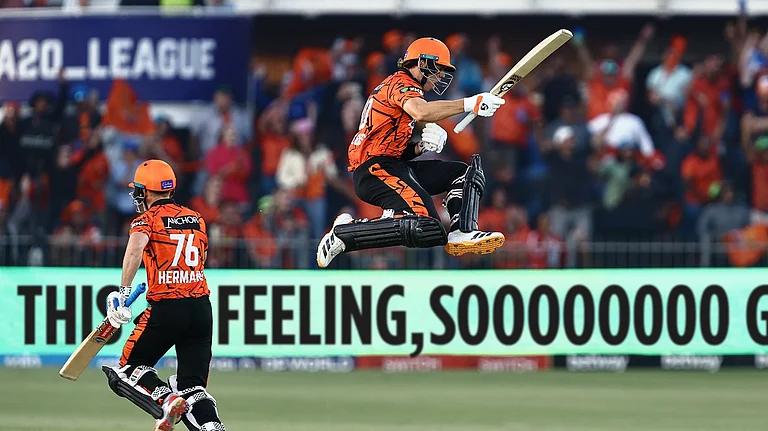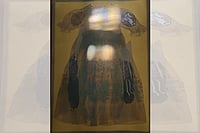Some nights when I lie awake thinking about how and why I ended up here, along with a bunch of the other events, I see a bridge with a platoon of books goose-stepping across, each one turning my head one inexorable inch until I found myself, here.
Leading the march is Midnight’s Children. Summer vacation, mid-1990s, hungrier for books than for ice-cream. I can’t say that I fully understood the book or that I particularly enjoyed it. There was something unsettling about its slippery visions, its sly allusions. It was like walking down an unfamiliar alley and sensing that several pairs of eyes watched you from behind slatted windows. I had not yet heard the term, magic realism, and I did not think of Midnight’s Children as either magical or surreal. It was a tale told slant and, inexplicably, I felt as if it was more directed at me than any of the other books I’d read.
ALSO READ: Silver Jubilation
This wasn’t my first encounter with IWE, or Indian writing in English. Khushwant Singh, Nissim Ezekiel, Sarojini Naidu’s work was on the school syllabus. I also recall a children’s book published by the National Book Trust. It was about kids having adventures in a forest, a little like Secret Seven and Famous Five, except that a dupatta was mentioned and a girl wore a hibiscus flower in her hair. We had hibiscus growing in the school garden. I have never forgotten this book for it brought stories home, making the ordinary and the local appear to be suitable subjects for art. When The God of Small Things won the Booker I came fully awake to the fact that Indians were creators of ‘English’ literature. IWE became a thing.
Over the quarter century that followed, I discovered that IWE is an involuntary club with a diverse membership. It includes Amitav Ghosh and Pankaj Mishra, P. Sainath and Kamala Das/Suraiyya, Akhil Katyal and Mamang Dai, Arun Kolatkar and Madhulika Liddle, Ruskin Bond and Anees Salim, Chetan Bhagat and Tishani Doshi. Its membership grew as fast as English language publishers could print and spanned all regions and genres.
ALSO READ: Postcards From The Newsroom
I also heard charges of elitism levelled at this club and, at first, these made me nervous. I knew Hindi well enough but English was the language I could touch with no gloves on. I was aware that it was accessible to a smaller fraction of the population but if we were going to do fractions, what language didn’t have its elites, its tell-tale dialects that gave away the country cousin, the migrant, the unlettered worker? Even so, a tail of suspicion attached itself to cultural production in English. The baggage associated with its colonial antecedents has shifted so that, instead of examining inheritors of actual power—politicians, priests and businesspeople—a certain outsiderhood was invented for those who had a special relationship with English.

An undersea installation, The Collector of Lost Dreams, by British artist Jason de Caires-Taylor, off Cancun, Mexico.
These suspicions confused me. Growing up, much of my reading was English ‘classics’—mainly British novels and plays, American short stories, translated works from Russian, German or French. Later, as a journalist, I saw that the concerns of people remain the same, no matter the language they spoke: how to survive, how to secure your present so the future appears a little less uncertain, how to gain freedom, how to protect a reputation, how to find and keep love, how to transgress without being destroyed by the hegemony of the day. Such were the struggles in the stories I read, whether they were set in 19th century England or 21st century India. Was it possible to measure the democratic quotient of a book based on how many people could read it? And what happens to nations where the majority is unlettered? Are all literatures elitist then?
ALSO READ: At Swim, Two Birds Perched On Latticed Sites
Elitism is a tricky word to pin onto a piece of cultural creation. For one, it is impossible to argue that the concerns and sufferings of the elite are outside the realm of human experience. One may argue that the values, dilemmas and cultural practices described by those who read and write in English are different, but difference alone does not make it unworthy of attention. Folktales and fairy tales included stories of the elite or of characters who manage to transcend class, and such stories have been popular among all classes, in all cultures.
The charge of elitism is sly in its implication that English is a literary tool aligned to upper-class interests. It implies that literature produced in other Indian languages is more democratic by virtue of its potential reach to greater numbers. The question of actual reach is never fully addressed. Sanskrit too is the preserve of the cultural and political elite, but even with the benefit of hindsight, it is rare to hear a dismissal of its literature on the grounds that so few people have access to it.
We tend to forget that among Indians who wrote in English were Gandhi, Nehru, Ambedkar. Some of our earliest writers were women—Pandita Ramabai Sarasvati, Cornelia Sorabji, Begum Rokeya—who advocated gender equality in every language they knew. Their work collectively served as a multilingual matrix that challenged the cultural, political and gender hegemonies of their day.
ALSO READ: The Bully Wears A Tailored Suit
Consider the sheer range of Indian writing in English and the barb of ‘elitism’ simply bounces off the wall. Was Khushwant Singh’s Train to Pakistan a story of elites any more than Bhisham Sahni’s Tamas? What about Kamala Markandaya’s Nectar in a Sieve? And wasn’t Krishna Sobti’s Hindi novel Dil-o-Danish the story of a well-to-do urban family? Is there not something of her spirit in Amitabha Bagchi’s English novel Half the Night is Gone? Could anyone dismiss Nirmal Verma’s Raat ka Reporter for being urban and middle class in Hindi? And how do we begin to pick apart the tangled threads of power in Mahasweta Devi’s Hajaar Chaurashir Maa in Bangla, Girish Karnad’s Tughlaq in Kannada, and Vikram Chandra’s Sacred Games in English?
Sometimes I wonder if the charge of elitism is not a form of cultural gaslighting that masks the privilege of the accusers, diminishing the achievement of books written in English. The caste/class backgrounds of those who write in English is not dramatically different from those who write in Hindi, Gujarati or Marathi. Most have solidly middle-class, white-collar jobs. Traditionally disempowered groups—Dalit, Adivasi, women—may begin writing in the language they have nearest access to, but when they can commandeer English as a vehicle, they do.
In recent years, I have paid closer attention to who complains loudest about Indians writing in English. Are they historically disempowered individuals, or are they concerned about the relative decline of other Indian literatures, or could they be writers who feel entitled to a greater share of attention and influence than they already have? Have they been translated? Have they translated others? Could it be that Indian writing in English is criticised because its accusers have not ventured very far from its banks and have therefore mistaken a wide river with several tributaries for a stagnant pond? Could they be afraid of what they’ll find once they wade in?
ALSO READ
Annie Zaidi is a poet, essayist, playwright and short story writer


























